In the previous cartoon, we discussed the growth journey of the NB-IoT baby. In fact, there are many other babies in the LPWAN field that have already gone out to make money (though it’s mostly done privately by some companies).
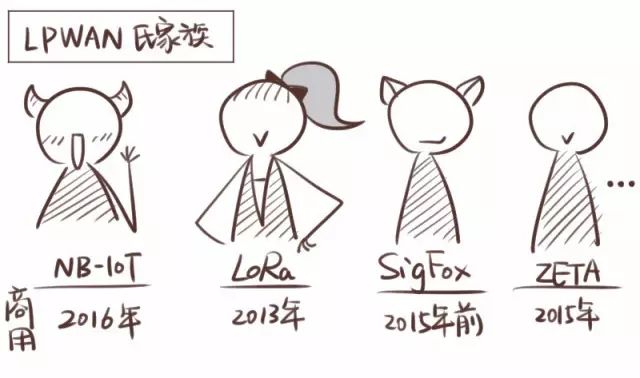
For example, LoRa, which has been commercially available since 2013, Sigfox from France, and ZETA developed by Zonghang Technology in China, etc. (Don’t ask me why LoRa is a girl; today she is the main character).
What? You still don’t know what Low Power Wide Area Network (LPWAN) is?
Come on, a big Baidu Encyclopedia right in the face must feel great (click to see the big picture):

Since the “WA” in LPWAN means wide area, it inevitably involves network operations. Therefore, LPWAN networks, like the GG babies (2G, 3G, 4G), are deployed by telecom operators or specialized IoT operators.
Meanwhile, WiFi, Bluetooth, and GG babies mostly work on phones and computers, with little interaction with other things.

With the emergence of LPWAN, communication distance has been extended, greatly expanding the demand for network connectivity. With the concept of the Internet of Things connecting everything, as long as we make some small modifications to various infrastructures in cities, they can all start to “speak” (which they’ve been holding back for many years).
Moreover, LPWAN is much cheaper and easier than GG babies!!! A battery can last for several years!!!
All urban infrastructures want to connect to the internet, leading to the following scenarios:

Building: I am a building, and I have a huge demand for networking for water meters, electricity meters, and switches.
Residential Building: Everything is for the people; of course, the household meters should be the first to connect!
Trash Bin: I want to go online! The previous cartoon said that if I don’t connect, it will harm the environment!
Manhole Cover: I am the underground dweller spread all over the city. Let me connect, and the benefits will be huge.
Underground Water Valve: Haha, in some cities, this baby has already been connected for a long time.
Tree: Is there a share for those who see this?

LPWAN babies connect primarily to urban infrastructure “things” such as electric and water meters, trash bins, etc., which is why LPWAN babies also have a high-cold title: Dedicated Network for the Internet of Things.
Authoritative agencies predict that by 2020, there will be billions of IoT devices connected, and LPWAN technology is one of the most profound trends in the Internet of Things.
So, let’s see what LPWAN babies can specifically do?

Underground Water Pipe: (holding the LPWAN baby’s little hand)
“Quick! Tell headquarters!! I’m leaking water!!!”

Trash Bin: (shyly)
“Please tell the street cat that I have fresh leftovers to eat~ There are fish bones that it loves.”

Justice Wardrobe: “Quick, tell the male owner! Quick, tell the male owner! Quick, tell the male owner!!!”
Of course, this is purely for fun. (facepalm)
Due to the three main characteristics of LPWAN: “long-distance communication”, “low-rate data transmission”, and “low power consumption”, it is very suitable for IoT applications that require long-distance transmission, very little communication data, and long battery life.

LPWAN babies are most suitable for two types of IoT applications:
One type is fixed location, relatively concentrated scenarios, such as smart water meters inside buildings, warehousing management, or other equipment data collection systems.
Although GG babies can be applied in these areas, their signal penetration is very weak! They lose signal just by entering an elevator.
The other type is long-distance applications that require battery power, such as smart parking, asset tracking, and geological hydrological monitoring. GG babies can also be used in this part, but they consume too much power! (high power consumption) The public says they can’t afford to raise them~
Getting to the point, in last week’s cartoon, we discussed the growth journey of the LPWAN family’s big cutie, the NB-IoT baby. Today, we will talk about their family’s second cutie: the LoRa baby!

LoRa = Long Range, is a type of LPWAN technology released by Semech.
Don’t underestimate her as the second child; she was commercially available even before the big cutie NB-IoT baby, and her supporters have formed the LoRa Alliance to support her growth.
There isn’t much information about LoRa online, and the content is quite technical, which is related to her background.
Originally, she was just a private small wireless technology without the technical basis for large-scale promotion, still a baby, but her international alliance father loves her very much~

The international LoRa Alliance launched a standard technology for wireless connectivity based on the LoRa protocol—LoRaWAN. The introduction of this standard technology has propelled the large-scale networking of LoRa technology. Currently, there are several companies in China promoting the development of LoRaWAN technology.
Under the father’s guidance, LoRa has finally grown into a graceful… big baby (??), and many companies and governments are optimistic about her.
LoRa International Alliance father: The baby has finally grown up!

However, compared to the big cutie NB-IoT baby, LoRa baby is more suitable for working in some enterprise private networks. Especially in China, she cannot roam freely like the NB-IoT baby.

NB-IoT baby: Want to go out and play?
LoRa baby: No…
So the question arises: as members of the LPWAN family, what are the differences between LoRa baby and the big cutie?
This leads us to the differences between LoRa and NB-IoT—
First, let’s popularize that the GG babies running outside all have their own fixed dedicated runways: authorized runways.
GG babies can run freely on these runways without interference from other communication babies, ensuring that the data in their hands is quickly delivered to the designated location.
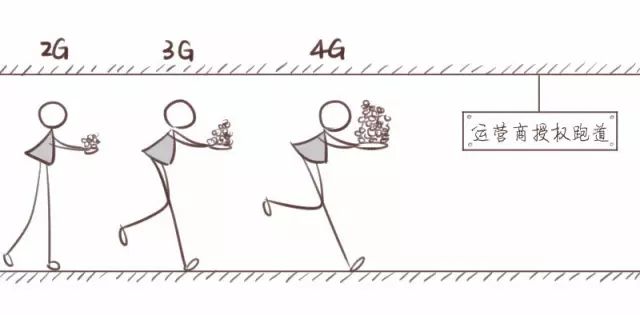
However, if external unauthorized communication babies intrude into GG babies’ dedicated runways, it will disrupt GG babies’ order, leading to the following consequences—

Fallen GG babies: (angrily) Who are you?!! My data fell on the ground!!
So other communication babies must not intrude; in severe cases, they will be taken away by the police! So they can only run in the free frequency bands outside.
Meanwhile, the NB-IoT baby is a rich second generation born with a golden spoon, with the attribute of an authorized runway from birth, a treasure in the hands of the government, operators, and device manufacturers.

Obsessed parents: Wow! This child is so good-looking from such a young age, who does he take after?
Thus, the NB-IoT baby can have its own dedicated authorized runway like GG babies.
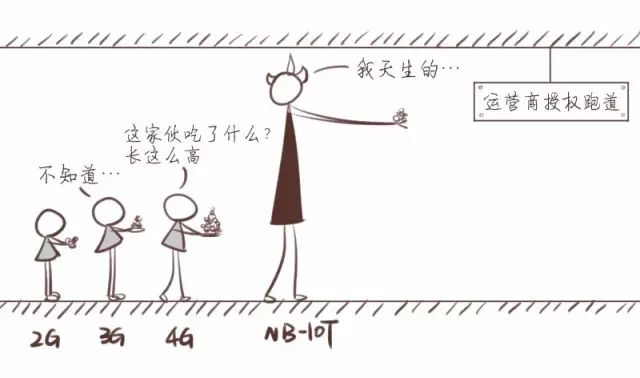
4G baby: What did this guy eat to grow so tall?
3G baby: I don’t know…
2G baby: (already confused)
However, after entering China, LoRa baby has not received enough attention from operators, and such a background means that LoRa baby does not have its own dedicated runway and can only operate in free runways.
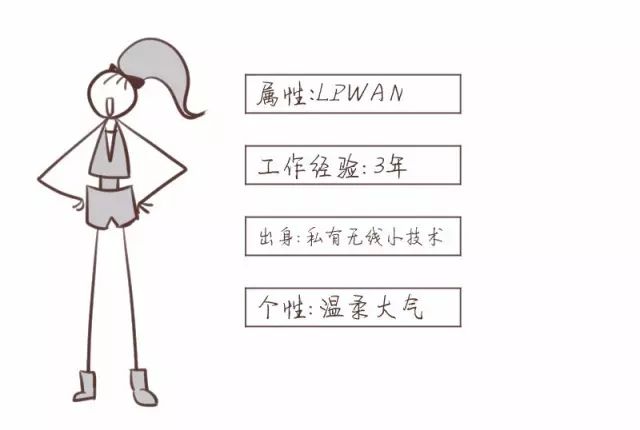
Nevertheless, LoRa baby has been in the field for many years. Although her background is not as solid as that of the NB-IoT rich second generation baby, she also has her own strengths:
She has high sensitivity, strong anti-interference ability, and is small and flexible, making her more suitable for working in specific enterprise private networks.
As a small wireless technology, LoRa has significant technical advantages over traditional small wireless technologies like ZigBee and 2.4G, including low power consumption, long transmission distances, strong signal penetration, and high sensitivity. Therefore, for some specific projects and enterprise private network needs, the LoRa private protocol is more flexible and cost-effective than LoRaWAN. However, the lack of a unified standard greatly limits the large-scale application of the technology. For customers, the lack of unified standards can also cause many troubles, such as inconsistent product communication quality, which increases the difficulty of large-scale technology promotion.
If we make an analogy, the NB-IoT baby is like the smartphone we use now, while the LoRa baby is like a walkie-talkie in specific environments.
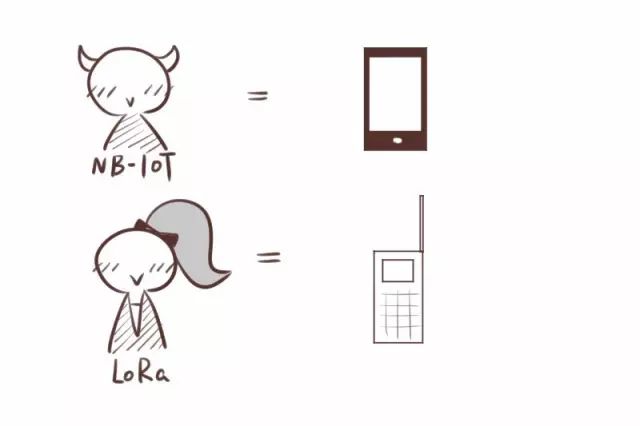
Of course, it cannot be denied that the emergence of NB-IoT has attracted a large number of people’s attention, and the previously glorious LoRa baby has been neglected by many, with many people not even recognizing her.
LoRaWAN has a unified standard specification, making it easier to apply and promote the technology. However, it seems that operators are more inclined to use NB-IoT technology, and the extent to which LoRaWAN can advance still has a lot of uncertainty.

Related Reading:
[Think Tank Recommendation] A Cartoon Explains What NB-IoT Can Do Besides WiFi and Bluetooth, Which Have Recently Gained Popularity?
Scan or long-press the QR code below to follow the “Industrial Internet Identification Think Tank” WeChat official account for more industry dynamics.